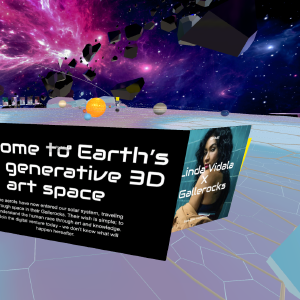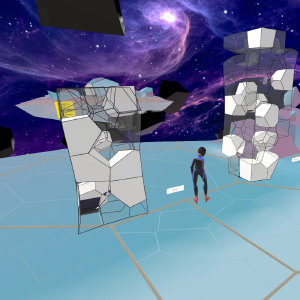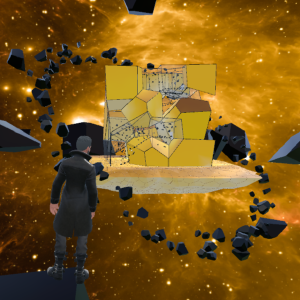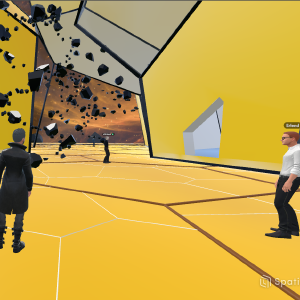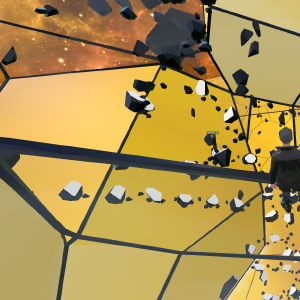Client: Spinn + FormatArchitect: Spinn ArkitekterLocation: The Metaverse
Date: 2022-10-01 00:00:00 +0000 UTCTags: Metaverse, Parametric Design, Geometry, Spatial, Rhino.Compute
Gallerocks
Gallerocks was a collaboration between Format Engineers Ltd and Norwegian Architects SPINN to create the world’s first parametrically generated virtual reality spaces within the Metaverse. The spaces would be made available on the Spatial.io environment and would be sold to organisations wanting unique spaces to host their virtual art/advertising and also act as a conference space. Our unique selling point would be that every virtual building would be unique and each tailored to the purchasers unique needs.
The unique spaces are generated by simple parameters defined by non-expert users. For the virtual reality world to be generated and to be exported to Spatial.io a number of complex operations were needed which required our expertise in parametric scripting and stand alone coding. To our knowledge (and confirmed by Spatial) this has not been done before. The workflow was a subject of intensive research. The final working solution can be summarised as:
- The user inputs desired parameters for the VR space they wish to be created in web-based table.
- The input triggers a script to run automatically, using these inputs (as well as some randomly generated parameters) to start the geometry generation process.
- The first step consisted of packing a series of spheres close together where the user’s desired connectivity through the space was achieved by linking the spheres into chains of objects. To achieve this publicly available software plugins were used in conjunction with other scripts created in house to achieve the final objective.
- Following the sphere packing operation, 3D volumes for the rooms were created using publicly available software plugins and in house developed code to create rooms that matched the users specifications.
- To create connectivity through the spaces, scripts were written to create door openings in optimal positions, and to create accessible working routes which could be parametrically generated in any created space. This required testing the user experience of the generated spaces to determine how and where these door openings and walking routes could be positioned to guarantee user access in the VR environment.
- The final VR environment along with textures was then exported to a file which could be viewed in outline form in the browser or downloaded as a full file to be loaded into the Spatial VR platform.
- A significant effort was given to automating this process so that the user could input their parameters, have their space generated and exported back to them without any assistance from the development team. The browser-based output allowed users to quickly see the results of their choices and make modifications before downloading their final version.
Gallerocks can be experienced here: https://www.thegallerocks.io/
The direct link to Spatial.io: LINK
